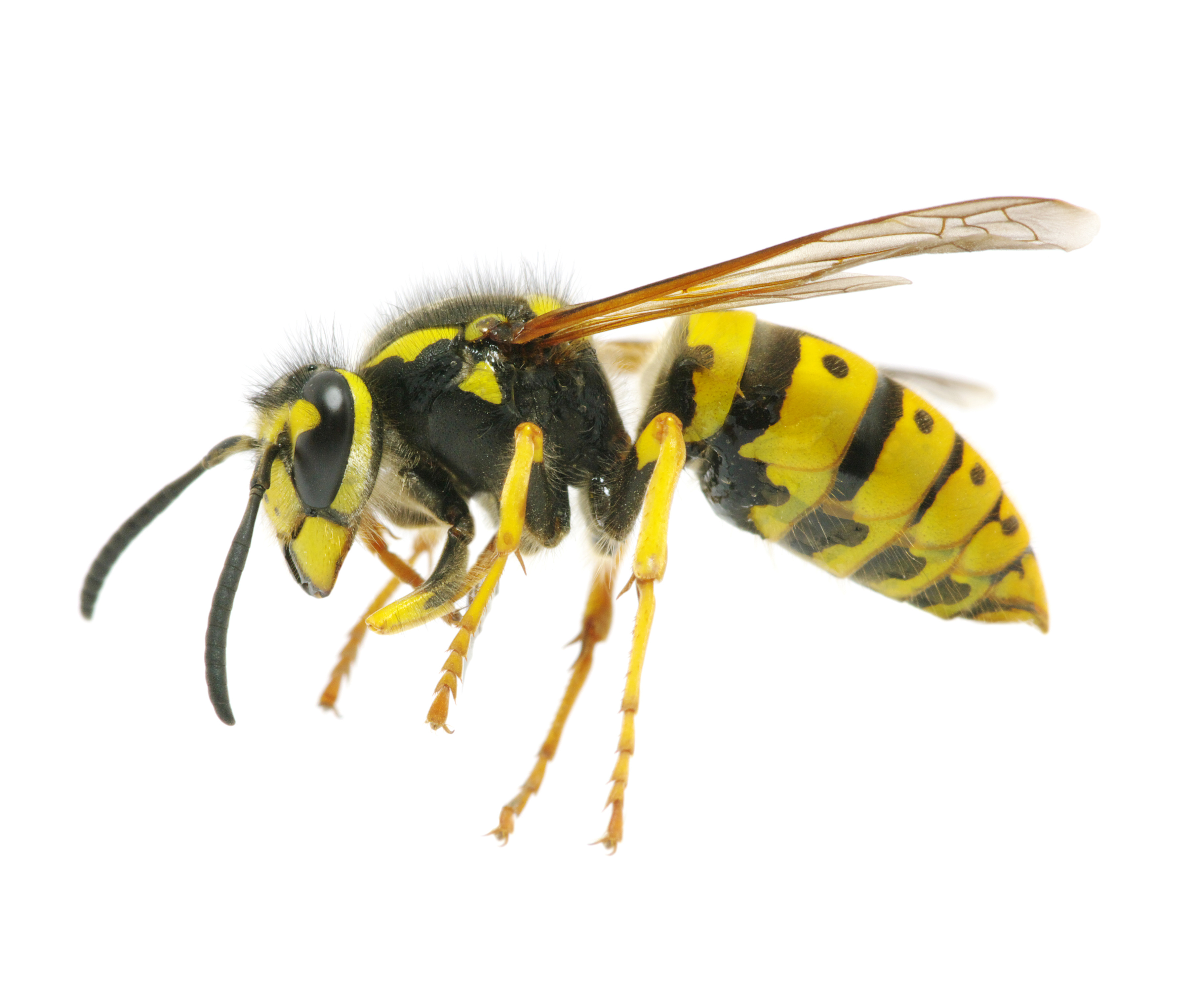Types of bees and wasps and what to do if they sting you
If you live in Northern California you have likely stepped on a bee or been stung by a bee or wasp once in your lifetime. Adults are typically in mild pain and can handle a sting but when it happens to a child it is not only heartbreaking but a little worrisome. The reason being, many northern california kids suffer from bee allergies. According to UC IMP, (University of California Agriculture and Natural Resources) one to two people out of 1,000—is allergic or hypersensitive to bee or wasp stings. Being a resource for your family is important to us so we have compiled information for you on common types of bees and wasps, and treatment for their stings.
Most Common Bees and Wasps
 Yellowjacket Wasp
Yellowjacket Wasp
– The Yellowjacket wasp feeds on house flies, caterpillars and other small insects. Depending on the type of yellowjacket, these pests will nest in trees, or around the overhang of your roof, or under your home or business. They can use their stinger multiple times and their sting can be quite painful causing swelling. Gardeners.com has a great article about Yellowjackets HERE.
Honey Bee
– Honey Bee’s are the friendliest of the bee family. They will sting if they feel threatened but are generally not aggressive.They are the ones we want around to help pollinate our gardens. The agriculture industry really depends on the honeybee for pollination. Honey Bee’s are appropriately named for their ability to secrete honey from their glands. For more info on the Honey Bee, BackyardBeekeepers.com is a good resource.
Bumble Bee –
These are the larger of the bee family and have visible hair on their body. These bees are made to pollinate and are typically found near flower gardens filling their bodies with pollen for their trip back to the nest. Like the honey Bee these bees will sting but only if they feel threatened.
How to treat a Bee Sting
First, if you think you are having an allergic reaction to a bee and wasp sting and are experiencing major swelling or trouble breathing we encourage you to seek professional medical attention. If you are not allergic to bees or wasps, then we have listed some simple steps below to treat your injury.
- Gently remove the stinger
- Apply a bag of ice
- Use Calamine Lotion for itching
- Take over the counter pain medication as needed
Pretty simple steps to treat your bee and wasp stings. Being stung is certainly not fun but you will recover quickly. Remember that Honey Bees and Bumble Bees are useful pests and are not out to hurt you. If you have a nest that needs removal or are concerned about a possible wasp infestation, give us a call. We are happy to help.
Bee and wasp stings and how to treat them Professional Pest Control Services in Tracy CA
Serving Northern California

